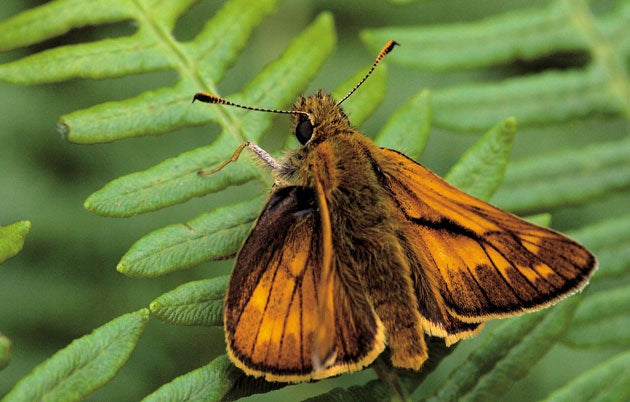Large skipper

Your support helps us to tell the story
From reproductive rights to climate change to Big Tech, The Independent is on the ground when the story is developing. Whether it's investigating the financials of Elon Musk's pro-Trump PAC or producing our latest documentary, 'The A Word', which shines a light on the American women fighting for reproductive rights, we know how important it is to parse out the facts from the messaging.
At such a critical moment in US history, we need reporters on the ground. Your donation allows us to keep sending journalists to speak to both sides of the story.
The Independent is trusted by Americans across the entire political spectrum. And unlike many other quality news outlets, we choose not to lock Americans out of our reporting and analysis with paywalls. We believe quality journalism should be available to everyone, paid for by those who can afford it.
Your support makes all the difference.Biggest of the eight species of skippers, small butterflies of grassland, which are fast-flying insects quite moth-like in their appearance. Faint spots or "windows" are visible on the wings, which help distinguish it from the similar small and Essex skippers. Generally a common butterfly, certainly in the south, they are getting scarcer the further north you go.
Larval foodplants: Grasses such as cock's foot, false brome and purple moor-grass
Where seen: Grassy meadows, woodland rides and clearings, urban parks with long grass
Current conservation status: Down 19 per cent since 1976, but this may be a factor of the past two very wet summers. Not thought to be threatened.
Join our commenting forum
Join thought-provoking conversations, follow other Independent readers and see their replies
0Comments